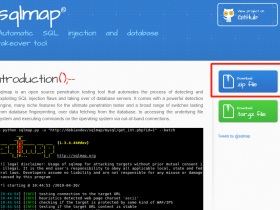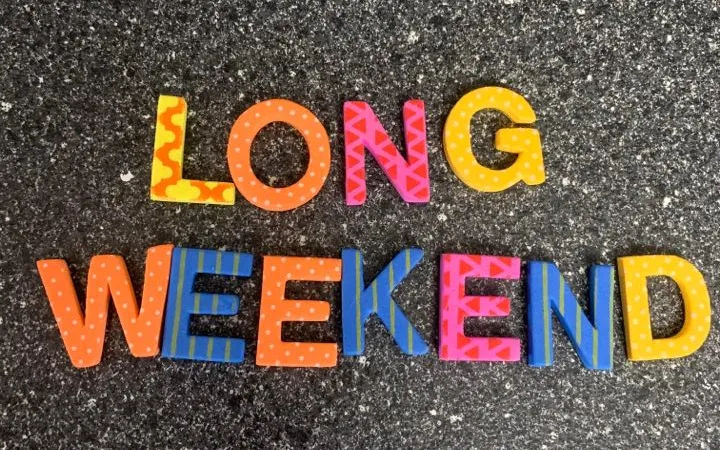Elasticsearch 是一个应用非常广泛的搜索引擎。它可以对文字进行分词,从而实现全文搜索。在实际的使用中,我们会发现有一些文字中包含一些表情符号,比如笑脸,动物等等,那么我们该如何对这些表情符号来进行搜索呢?
? => ?, light skin tone, skin tone, type 1–2 ? => ?, medium-light skin tone, skin tone, type 3 ? => ?, medium skin tone, skin tone, type 4 ? => ?, medium-dark skin tone, skin tone, type 5 ? => ?, dark skin tone, skin tone, type 6 ♪ => ♪, eighth, music, note ♭ => ♭, bemolle, flat, music, note ♯ => ♯, dièse, diesis, music, note, sharp ? => ?, face, grin, grinning face ? => ?, face, grinning face with big eyes, mouth, open, smile ? => ?, eye, face, grinning face with smiling eyes, mouth, open, smile ? => ?, beaming face with smiling eyes, eye, face, grin, smile ? => ?, face, grinning squinting face, laugh, mouth, satisfied, smile ? => ?, cold, face, grinning face with sweat, open, smile, sweat ? => ?, face, floor, laugh, rofl, rolling, rolling on the floor laughing, rotfl ? => ?, face, face with tears of joy, joy, laugh, tear ? => ?, face, slightly smiling face, smile ? => ?, face, upside-down ? => ?, face, wink, winking face ? => ?, tiger ? => ?, leopard ? => ?, face, horse ? => ?, equestrian, horse, racehorse, racing ? => ?, face, unicorn ? => ?, stripe, zebra ? => ?, deer
在上面,我们可以看到各种各样的 emoji 符号。比如我们想搜索 grin,那么它就把含有 ? emoji 符号的文档也找出来。在今天的文章中,我们来展示如何实现对 emoji 符号的进行搜索。
安装
如果你还没有对 Elasticsearch 及 Kibana 进行安装的话,请参阅之前的文章 “Elastic:菜鸟上手指南” 进行安装。 另外,我们必须安装 ICU analyzer。关于 ICU analyzer 的安装,请参阅之前的文章 “Elasticsearch:ICU 分词器介绍”。我们在 Elasticsearch 的安装根目录中,打入如下的命令:
./bin/elasticsearch-plugin install analysis-icu
等安装好后,我们需要重新启动 Elasticsearch 让它起作用。运行:
./bin/elasticsearch-plugin list
上面的命令显示:
$ ./bin/elasticsearch-plugin install analysis-icu -> Installing analysis-icu -> Downloading analysis-icu from elastic [=================================================] 100% -> Installed analysis-icu $ ./bin/elasticsearch-plugin list analysis-icu
安装完 ICU analyzer 后,我们必须重新启动 Elasticsearch。
搜索 emoji 符号
我们先做一个简单的实验:
GET /_analyze
{
"tokenizer": "icu_tokenizer",
"text": "I live in ?? and I'm ??"
}上面使用 icu_tokenizer 来对 “I live in ?? and I'm ??” 进行分词。 ?? 表情符号非常独特,因为它是更经典的 ? 和 ? 表情符号的组合。 中国的国旗也很特别,它是 ? 和 ? 的组合。 因此,我们不仅在谈论正确地分割 Unicode 代码点,而且在这里真正地了解了表情符号。
上面的请求的返回结果为:
{
"tokens" : [
{
"token" : "I",
"start_offset" : 0,
"end_offset" : 1,
"type" : "<ALPHANUM>",
"position" : 0
},
{
"token" : "live",
"start_offset" : 2,
"end_offset" : 6,
"type" : "<ALPHANUM>",
"position" : 1
},
{
"token" : "in",
"start_offset" : 7,
"end_offset" : 9,
"type" : "<ALPHANUM>",
"position" : 2
},
{
"token" : """??""",
"start_offset" : 10,
"end_offset" : 14,
"type" : "<EMOJI>",
"position" : 3
},
{
"token" : "and",
"start_offset" : 16,
"end_offset" : 19,
"type" : "<ALPHANUM>",
"position" : 4
},
{
"token" : "I'm",
"start_offset" : 20,
"end_offset" : 23,
"type" : "<ALPHANUM>",
"position" : 5
},
{
"token" : """??""",
"start_offset" : 24,
"end_offset" : 29,
"type" : "<EMOJI>",
"position" : 6
}
]
}显然 emoji 的符号被正确地分词,并能被搜索。
在实际的使用中,我们可能并不限限于对这些 emoji 的符号的搜索。比如我们想对如下的文档进行搜索:
PUT emoji-capable/_doc/1
{
"content": "I like ?"
}上面的文档中含有一个 ?,也就是老虎。针对上面的文档,我们想搜索 tiger 的时候,也能正确地搜索到文档,那么我们该如何去做呢?
在 github 上面,有一个项目叫做 https://github.com/jolicode/emoji-search/。在它的项目中,有一个目录 https://github.com/jolicode/emoji-search/tree/master/synonyms。这里其实就是同义词的目录。我们现在下载其中的一个文件 https://github.com/jolicode/emoji-search/blob/master/synonyms/cldr-emoji-annotation-synonyms-en.txt 到 Elasticsearch 的本地安装目录:
config ├── analysis │ ├── cldr-emoji-annotation-synonyms-en.txt │ └── emoticons.txt ├── elasticsearch.yml ...
在我的电脑上:
$ pwd /Users/liuxg/elastic1/elasticsearch-7.11.0/config $ tree -L 3 . ├── analysis │ └── cldr-emoji-annotation-synonyms-en.txt ├── elasticsearch.keystore ├── elasticsearch.yml ├── jvm.options ├── jvm.options.d ├── log4j2.properties ├── role_mapping.yml ├── roles.yml ├── users └── users_roles
在上面的 cldr-emoji-annotation-synonyms-en.txt 的文件中,它包含了常见 emoji 的符号的同义词。比如:
? => ?, face, grin, grinning face ? => ?, face, grinning face with big eyes, mouth, open, smile ? => ?, eye, face, grinning face with smiling eyes, mouth, open, smile ? => ?, beaming face with smiling eyes, eye, face, grin, smile ? => ?, face, grinning squinting face, laugh, mouth, satisfied, smile ? => ?, cold, face, grinning face with sweat, open, smile, sweat ....
为此,我们来进行如下的实验:
PUT /emoji-capable
{
"settings": {
"analysis": {
"filter": {
"english_emoji": {
"type": "synonym",
"synonyms_path": "analysis/cldr-emoji-annotation-synonyms-en.txt"
}
},
"analyzer": {
"english_with_emoji": {
"tokenizer": "icu_tokenizer",
"filter": [
"english_emoji"
]
}
}
}
},
"mappings": {
"properties": {
"content": {
"type": "text",
"analyzer": "english_with_emoji"
}
}
}
}在上面,我们定义了 english_with_emoji 分词器,同时我们在定义 content 字段时也使用相同的分词器 english_with_emoji。我们使用 _analyze API 来进行如下的使用:
GET emoji-capable/_analyze
{
"analyzer": "english_with_emoji",
"text": "I like ?"
}上面的命令返回:
{
"tokens" : [
{
"token" : "I",
"start_offset" : 0,
"end_offset" : 1,
"type" : "<ALPHANUM>",
"position" : 0
},
{
"token" : "like",
"start_offset" : 2,
"end_offset" : 6,
"type" : "<ALPHANUM>",
"position" : 1
},
{
"token" : """?""",
"start_offset" : 7,
"end_offset" : 9,
"type" : "SYNONYM",
"position" : 2
},
{
"token" : "tiger",
"start_offset" : 7,
"end_offset" : 9,
"type" : "SYNONYM",
"position" : 2
}
]
}显然它除了返回 ?, 也同时返回了 tiger 这样的 token。也就是说我们可以同时搜索这两种,都可以搜索到这个文档。同样地:
GET emoji-capable/_analyze
{
"analyzer": "english_with_emoji",
"text": "? means happy"
}它返回:
{
"tokens" : [
{
"token" : """?""",
"start_offset" : 0,
"end_offset" : 2,
"type" : "SYNONYM",
"position" : 0
},
{
"token" : "face",
"start_offset" : 0,
"end_offset" : 2,
"type" : "SYNONYM",
"position" : 0
},
{
"token" : "grin",
"start_offset" : 0,
"end_offset" : 2,
"type" : "SYNONYM",
"position" : 0
},
{
"token" : "grinning",
"start_offset" : 0,
"end_offset" : 2,
"type" : "SYNONYM",
"position" : 0
},
{
"token" : "means",
"start_offset" : 3,
"end_offset" : 8,
"type" : "<ALPHANUM>",
"position" : 1
},
{
"token" : "face",
"start_offset" : 3,
"end_offset" : 8,
"type" : "SYNONYM",
"position" : 1
},
{
"token" : "happy",
"start_offset" : 9,
"end_offset" : 14,
"type" : "<ALPHANUM>",
"position" : 2
}
]
}它表明,如果我们搜索 face, grinning,grin,该文档也会被正确地返回。
现在,我们输入如下的两个文档:
PUT emoji-capable/_doc/1
{
"content": "I like ?"
}
PUT emoji-capable/_doc/2
{
"content": "? means happy"
}我们对文档进行如下的搜索:
GET emoji-capable/_search
{
"query": {
"match": {
"content": "?"
}
}
}或:
GET emoji-capable/_search
{
"query": {
"match": {
"content": "tiger"
}
}
}他们都将返回第一个文档:
{
"took" : 2,
"timed_out" : false,
"_shards" : {
"total" : 1,
"successful" : 1,
"skipped" : 0,
"failed" : 0
},
"hits" : {
"total" : {
"value" : 1,
"relation" : "eq"
},
"max_score" : 0.8514803,
"hits" : [
{
"_index" : "emoji-capable",
"_type" : "_doc",
"_id" : "1",
"_score" : 0.8514803,
"_source" : {
"content" : """I like ?"""
}
}
]
}
}通用地,我们进行如下的搜索:
GET emoji-capable/_search
{
"query": {
"match": {
"content": "?"
}
}
}或者:
GET emoji-capable/_search
{
"query": {
"match": {
"content": "grin"
}
}
}它们都将返回第二个文档:
{
"took" : 1,
"timed_out" : false,
"_shards" : {
"total" : 1,
"successful" : 1,
"skipped" : 0,
"failed" : 0
},
"hits" : {
"total" : {
"value" : 1,
"relation" : "eq"
},
"max_score" : 0.8514803,
"hits" : [
{
"_index" : "emoji-capable",
"_type" : "_doc",
"_id" : "2",
"_score" : 0.8514803,
"_source" : {
"content" : """? means happy"""
}
}
]
}
}转自 csdn Elastic中国社区官方博客









